
Audi has released in depth information and photos for the new R8 GT. The output of its 5.2-liter V10 has been increased to 560hp; vehicle weight has been reduced by roughly 220.46 lb. The R8 GT accelerates from 0-62mph) in 3.6 seconds and reaches a top speed of 198.84mph.
The added performance is due in part to a 100 kilogram (220 lb) weight reduction. To cut the fat, engineers installed a thinner windshield, polycarbonate bulkheads, and fiber-glass reinforced plastic seats. All told, the R8 GT tips the scales at 1,525 kilograms (3,362 lb).
The design is influenced by the black painted front grille, by the extension of carbon front spoiler, by the LED lights for all lights, by the side carbon fiber air intakes and by the new side mirrors. Not missing the special GT logos, the pronounced carbon fiber rear spoiler, the exhausts embedded in the rear bumper, the taillights on a black background and the 19-inch alloy wheels. The supercar will be available in colors like Samoa Orange, Suzuka Gray, Ice Silver and Phantom Black with pearl effect.
Other Audi options include a full leather package, power-adjustable and heated seats, a multifunction steering wheel, an Alcantara rear shelf, a storage package, controls covered in leather with contrasting stitching, cruise control and a higher-capacity 90-liter fuel tank. A rotary lock for the four-point belt is also available.
Pricing starting at EUR193,000 in Germany and delivered starting next spring.
Source: Audi

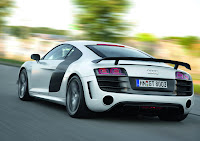
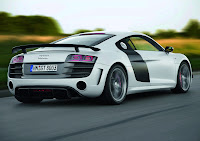



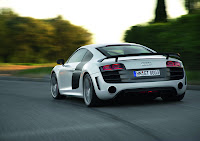
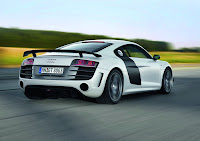

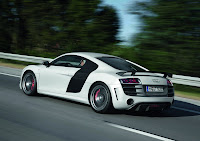
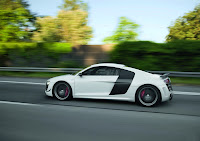
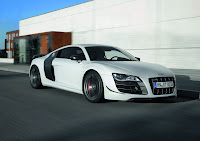
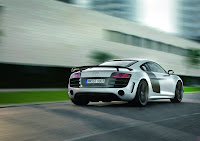
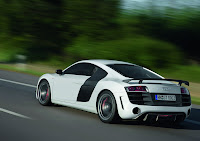
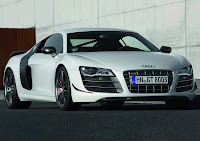
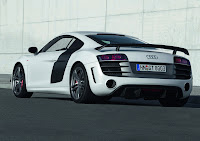
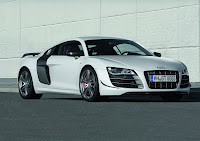

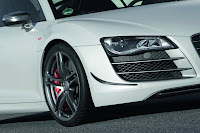
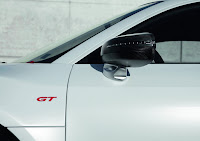
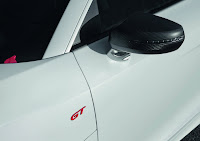
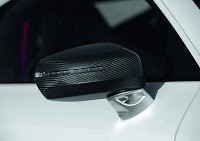
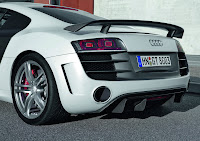
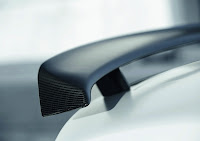
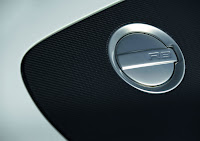
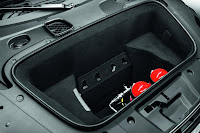
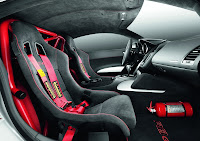
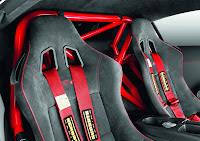
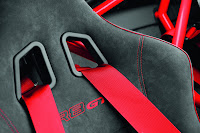
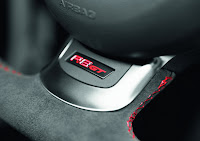
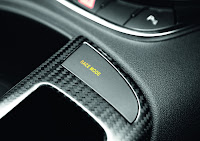
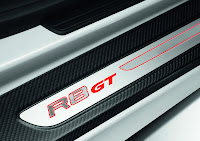
Press Release
The Audi R8 GT
Now even more dynamic, lighter, more powerful and faster: Audi is launching a limited-production version of its R8 high-performance sports car - the R8 GT. The output of its 5.2-liter V10 has been increased to 412 kW (560 hp); vehicle weight has been reduced by roughly 100 kilograms (220.46 lb). The R8 GT accelerates from zero to 100 km/h (62.14 mph) in 3.6 seconds and reaches a top speed of 320 km/h (198.84 mph). The efficient direct-injection engine consumes only 13.9 liters of fuel per 100 km (16.92 US mpg) on average. The engineers have reduced the weight of the Audi R8 GT drastically once again compared to the R8 5.2 FSI quattro. With quattro permanent all-wheel drive (and without a driver), the Audi high-performance sports car tips the scales at just 1,525 kilograms (3,362 lb), for a power-to-weight ratio of only 2.72 kilograms (6 lb) per hp. In addition to the aluminum Audi Space Frame body, a number of new components made of carbon fiber composite play a decisive role in the car's low weight. The R8 GT is a driving machine with breathtaking lateral acceleration and lightning-fast, nearly instantaneous reactions. The 19-inch wheels keep the car planted firmly on the asphalt, and the carbon fiber ceramic brakes easily keep the power under control. The R8 GT gives a whole new meaning to the term "high-performance sports car."
Design and aerodynamics
The design of the Audi R8 GT is an expression of highly concentrated power and a technical sculpture. As always with Audi, it concentrates on the pure essence and remains free of unnecessary decorations. The dimensions allude to the contours of the vehicle's dynamics - 4.43 meters (14.53 ft) long, wheelbase of 2.65 meters (8.69 ft), and 1.93 meters (6.33 ft) wide, but only 1.24 meters (4.07 ft) tall.
The Audi designers have made numerous modifications to the exterior, many of which serve to lower the weight and further improve the aerodynamics.
The R8 GT produces even more downforce when driven fast than the production model - without any increase in the Cd value of 0.36 or frontal area of 1.99 m2 (21.42 sq ft).
The frame of the single-frame grille, its struts and the slats in the air intakes are matt titanium gray; the grille is painted matt black. The front splitter under the bumper has a double lip and is made of a carbon fiber composite (CFRP). Slender, elegantly curved flics at the corners of the nose increase the downforce on the front axle and are also made of CFRP.
One characteristic highlight of the Audi R8 GT are the standard LED headlights, which use light-emitting diodes for all functions. They produce bright, homogeneous light, have a long service life and low energy consumption. The headlights also give the new top model of the R8 line an unmistakable look, day or night. The reflectors are reminiscent of open mussel shells; the daytime running lights each comprise 24 LEDs and appear as a continuous band.
The side view of the R8 GT is dominated by the sideblades, which direct air to the engine. They, too, are made of matt carbon fiber composite. The same material is used for the housings of the side mirrors with the LED turn signals. The housings are mounted on an aluminum base with broken-out slats. Audi has developed an exclusive five twin-spoke Y design in a titanium-look finish for the 19-inch wheels. The front fenders bear R8 GT badges, and the sill extensions have been widened.
The modifications to the rear of the car are particularly noticeable. The fixed wing of matt carbon fiber composite is mounted to the body with two bars and saves 1.2 kilograms (2.65 lb) of weight compared to the production solution. The ventilation louvers on both sides of the long rear hatch have been redesigned, as has the CFRP bumper, which frames the large, round tailpipes and vents for the wheel wells.
The larger diffuser is also made of carbon fiber composite; the license plate bezel and the wide slats at the rear are finished in matt titanium gray. The tail lights, which like the front headlights are designed with LED technology, have dark housings with panes of clear glass. The R8 GT is available in four body colors: Samoa Orange, metallic; Ice Silver, metallic; and Phantom Black, pearl effect; Suzuka Gray, matt is available as an option.
Body
The car on which the Audi R8 GT is based - the R8 5.2 FSI quattro - adheres strictly to Audi's lightweight construction philosophy, weighing just 1,625 kilograms (3,583 lb) with the standard quattro drive but without the driver. In keeping with the classic ASF technology, its body is made of aluminum. Cast nodes and extruded sections form a very high-strength frame, to which the aluminum body panels are joined by means of positive and friction connections. Ultra lightweight magnesium is used as the material for the engine frame.
The space frame body, which is largely hand-built in a complex fabrication process at the production shop at the Neckarsulm site, weighs only 210 kilograms (463 lb). It is very crash-worthy, and lays the foundation for the uncompromisingly precise handling and high vibrational comfort of the Audi R8 GT.
In light of this background, the mandate to save another 100 kilograms (220 lb) of weight was a great challenge for the Audi engineers. They solved it in their own characteristic way - with high-tech expertise and an approach that incorporated every field of technology. In the end the scales came to rest at 1,525 kilograms (3,362 lb) without the driver.
The windshield of the R8 GT is made of thinner glass. The bulkhead between the passenger cell and the engine compartment is made of a strong, lightweight polycarbonate, as is the window in the rear hatch that allows the V10 engine to be seen in all its technical glory. These three modifications amount to a weight reduction of nine kilograms (19.84 lb). The Audi engineers used thinner sheet metal and additional cutouts to shave 2.6 kilograms (5.73 lb) from the aluminum hatch over the 100 liter (3.53 cu ft) luggage compartment at the front of the car.
The rear hatch of the high-performance sports car also had a lot to do with the weight reduction. It is a self-supporting structure made of carbon fiber-reinforced plastic - an advantage of 6.6 kilograms (14.55 lb). The rear bumper and the sideblades of this same material save an additional 5.2 and 1.5 kilograms (11.46 and 3.31 lb), respectively. With its minimal weight and extremely high strength, CFRP is the ideal material for a high-performance sports car, and Audi has broad-based experience in its use.
No comments:
Post a Comment